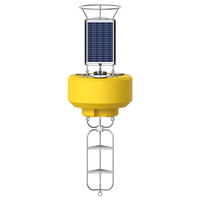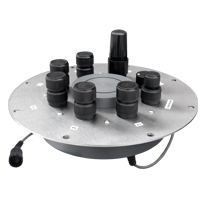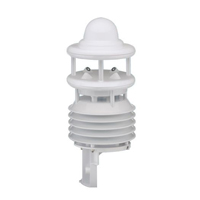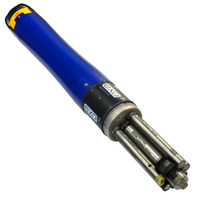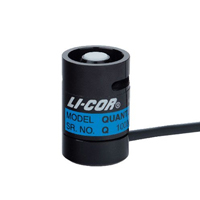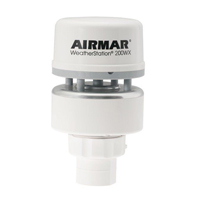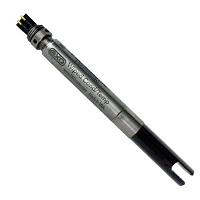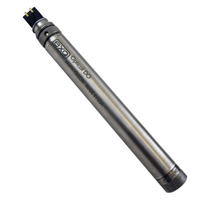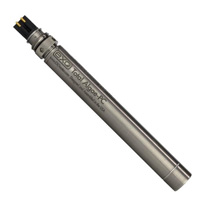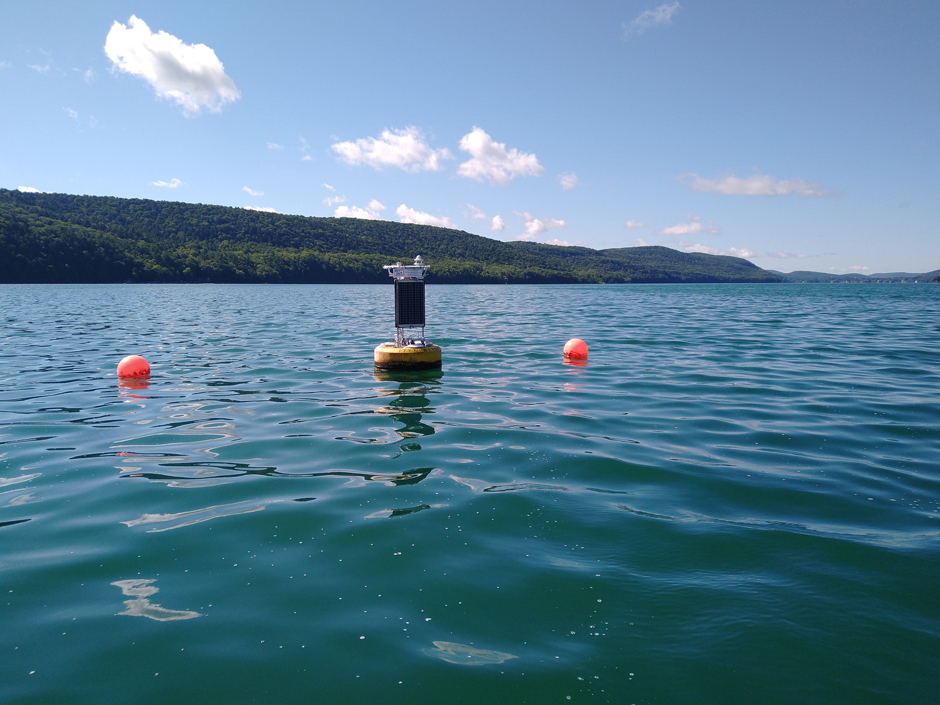 In 2022, Otsego Lake in New York became one of many lakes to experience its first cyanobacterial bloom. While the cause is still unknown, the blooms may be an indicator of various water quality issues resulting from invasive species, runoff events or other environmental stressors. To get to the bottom of the mystery, Kiyoko Yokota, an associate professor of biology with the State University of New York (SUNY) at Oneonta, has spent the past several years researching the lake and supporting local management strategies and organizations.
In 2022, Otsego Lake in New York became one of many lakes to experience its first cyanobacterial bloom. While the cause is still unknown, the blooms may be an indicator of various water quality issues resulting from invasive species, runoff events or other environmental stressors. To get to the bottom of the mystery, Kiyoko Yokota, an associate professor of biology with the State University of New York (SUNY) at Oneonta, has spent the past several years researching the lake and supporting local management strategies and organizations.
Yokota serves as the president of the North American Lake Management Society, scientific advisor for the Otsego Lake Watershed Supervisory Committee and technical advisor for the Otsego Lake Association, all of which support conservation efforts on the lakes.
Currently, Yokota is working with the New York State Department of Environmental Conservation to develop the Nine Element Plan, a comprehensive lake and watershed management plan. The goal of the plan is to create a long-term strategy to protect both Otsego Lake and the surrounding watershed. This strategy will be periodically evaluated for its efficacy and revised as needed. The evaluation uses watershed and lake models to be built with both manually collected snapshot data and high-frequency sensor data.
Challenge: Gathering High-Frequency Data Remotely
Yokota’s research has been met with several challenges. First, as a professor at a primarily undergraduate institution (PUI), her team does not include postdocs, Ph.D. students or lab techs. While the staff at SUNY Oneonta Biological Field Station carries out biweekly discrete sampling, Yokota needed a more automated sampling approach that allowed her to monitor the lake remotely and at a higher temporal resolution for her project.
Yokota is also faced with the challenge of monitoring algal blooms in the lake—which includes the state of the water before, during and after the bloom. The data fathered by Yokota’s work helps develop the lake and watershed models used to assess various strategies considered as part of the Nine Element Plan.
Solution: Long-Term Deployment and Remote Monitoring in Otsego Lake
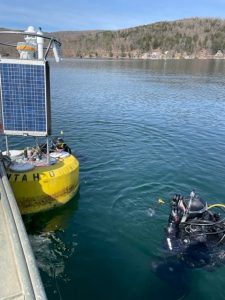 When Yokota first started considering remote monitoring options for the lake, the NexSens name was mentioned by several of her Global Lake Ecological Observatory Network (GLEON) colleagues who were fellow educators at PUIs. Following the recommendations, Yokota applied for a grant to purchase a CB-950 buoy.
When Yokota first started considering remote monitoring options for the lake, the NexSens name was mentioned by several of her Global Lake Ecological Observatory Network (GLEON) colleagues who were fellow educators at PUIs. Following the recommendations, Yokota applied for a grant to purchase a CB-950 buoy.
Yokota equipped the buoy with an X2-CB data logger, two YSI EXO 2 sondes, a Lufft WS600 and Li-Cor LI-190R PAR sensor. An Airmar 200WX-IPX7 was added later on in order to meet environmental conditions. The sondes are deployed at different depths in the water column, collecting data from the epilimnion and hypolimnion. Each of the sondes measures temperature, conductivity, dissolved oxygen and pH. The top sonde is equipped with two additional sensors, measuring total algae and fluorescent dissolved organic matter.
The sondes and weather sensors gather data which are then logged by the X2 and transferred to the WQData LIVE online database. Yokota can view the real-time data wherever she has Wi-Fi or cellular data instead of manually performing sampling or having to retrieve data from a non-telemetric logger. Basic water temperature and weather data are shared with the public through the WQData applet and
Benefits: Saving Time and Gathering Data
NexSens’ telemetry technology makes monitoring easy for researchers who split their time between teaching, fieldwork, outreach and volunteering. No matter where Yokota is, she can log into WQData LIVE and see what’s happening at the lake.
While in classes and meetings on campus, Yokota can still gather data on the lake consistently through the system deployed on Otsego Lake. Undergraduate and master’s students, including those who completed SUNY Oneonta’s underwater (SCUBA) research courses, use the buoy data in their coursework and research and learn how to deploy, maintain, and winterize the buoy system and the sensors.
Otsego Lake is also included in the Citizens Statewide Lake Assessment Program, which provides certified water quality data that are accepted by New York State for lake and watershed planning, and Yokota works with volunteers to encourage community engagement and to help build a more comprehensive data pool.
The Bottom Line
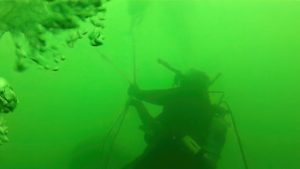 The lake monitoring programs by the field station, volunteers and the buoy-based system provide a variety of data points for resource managers to consider. Fortunately, the real-time and discrete sampling data that has been collected over the past several years have opened the door for researchers to examine the lake and watershed before, during and after the initial bloom event, as well as the subsequential blooms that have followed.
The lake monitoring programs by the field station, volunteers and the buoy-based system provide a variety of data points for resource managers to consider. Fortunately, the real-time and discrete sampling data that has been collected over the past several years have opened the door for researchers to examine the lake and watershed before, during and after the initial bloom event, as well as the subsequential blooms that have followed.
Yokota explains, “When I first got the buoy, I was more or less like, ‘Oh, long-term high-frequency data would be useful for various studies.’ Because you can compare the background water quality and weather information from the buoy with whatever you might observe or manipulate. But now we have the long-term high-frequency data before and after the lake started to bloom.”
She continues, “I was so excited when our proposal was funded, and Paul Nieberding helped me place the order and helped me keep track of different parts that came in separate shipments. Justin Walters has been super helpful—so many times he helped me over the phone while I was on a boat next to the buoy in the middle of the lake and gave me step-by-step guidance while he was able to check real-time data on his side. I have yet to meet Justin in person, but it feels like he is part of my lab!”
The data collected by the buoy-based system has made Yokota’s lake research much more efficient and impactful compared to what could have been achieved by a low-frequency (and most likely irregular) manual sampling program by PUI faculty with a full teaching load away from the study system. Otsego Lake is a part of the larger GLEON network, and as such, the high-frequency data collected by the buoy support local efforts as well as limnological research at the regional and global scales.
Equipment
The NexSens CB-950 Data Buoy is designed for deployment in lakes, rivers, coastal waters, harbors, estuaries and other freshwater or marine environments.
The X2-CB is a fully featured data logger housed inside a waterproof enclosure specifically designed to integrate with NexSens’ CB-Series data buoys.
The Lufft WS600 Multi-Parameter Weather Sensor simultaneously measures air temperature, humidity, pressure, precipitation & wind with an integrated electronic compass for corrected wind direction on moving platforms.
WQData LIVE is a web-based project management service that allows users 24/7 instant access to data collected from remote telemetry systems.
The YSI EXO represents the next generation of water quality instruments from YSI. The EXO2 sonde includes six sensor ports and a central anti-fouling wiper option.
The LI-190R Quantum Sensor measures photosynthetically active radiation (PAR), which is energy that drives photosynthetic reactions in plants.
The Airmar 200XW-IPX7 is a more robust weather sensor option to meet the operational challenges of harsh open water environments.
The EXO wiped conductivity & temperature sensor is designed for the EXO2 sonde with central wiper to reduce cleaning requirements in unattended deployments.
The EXO optical dissolved oxygen sensor is a digital smart sensor featuring welded titanium construction and wet-mateable connectors.
[equipment name=" YSI EXO Unguarded pH Sensor " link=" https://www.fondriest.com/ysi-exo-unguarded-ph-sensor.htm " img=" https://www.nexsens.com/wp-content/uploads/2019/04/exo_pH.jpg "] The EXO unguarded pH sensor is a digital smart sensor featuring welded titanium construction and wet-mateable connectors.
The YSI EXO total algae sensor is a digital smart sensor for helping monitor, mitigate, and manage the impacts of harmful algal blooms.

